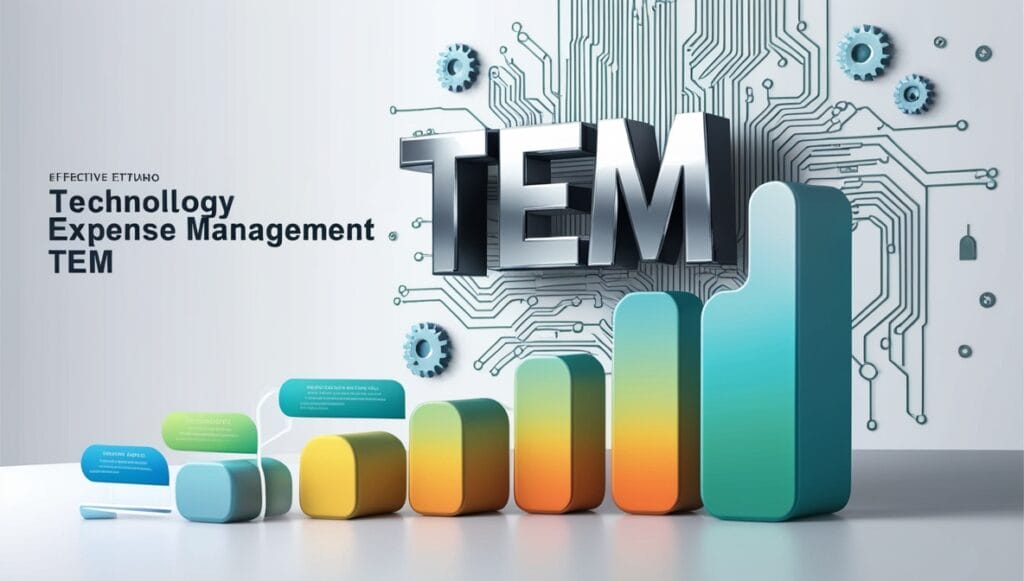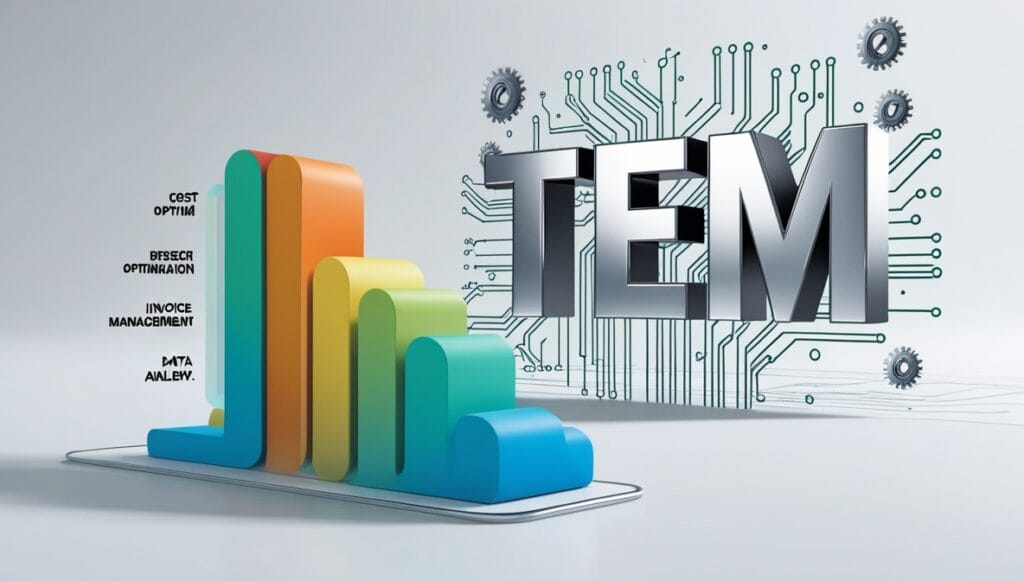
Introduction to Technology Expense Management (TEM)
Technology Expense Management (TEM) is a strategic practice that enables organizations to track, monitor, and optimize their technology-related expenditures. As businesses increasingly rely on digital infrastructure, managing costs associated with software, hardware, cloud services, telecommunications, maintenance, and data security has become critical. TEM provides a structured approach to controlling these expenses, ensuring financial efficiency while supporting operational and strategic objectives.
In today’s fast-evolving digital landscape, companies face the challenge of balancing technological innovation with cost control. Without proper oversight, technology expenses can spiral out of control due to redundant subscriptions, underutilized licenses, or inefficient vendor contracts. Technology Expense Management addresses these challenges by offering visibility into spending patterns, identifying cost-saving opportunities, and enforcing compliance with budgetary guidelines.
The importance of TEM extends beyond mere cost reduction—it enhances financial accountability, improves vendor negotiations, and ensures that technology investments align with business priorities. By implementing robust TEM strategies, organizations can eliminate wasteful spending, optimize resource allocation, and maintain a competitive edge in an increasingly technology-driven market.
As enterprises continue to adopt cloud computing, IoT, AI, and other advanced technologies, the role of Technology Expense Management will only grow in significance. Companies that prioritize TEM can achieve greater financial transparency, reduce risks associated with uncontrolled expenditures, and maximize the return on their technology investments.
In the following sections, we will explore the key components, benefits, and best practices of Technology Expense Management, along with real-world examples of its impact on organizational efficiency.
Key Components of Technology Expense Management (TEM)
Technology Expense Management (TEM) is not just about processing invoices or identifying billing errors—it is a comprehensive, lifecycle-based approach to managing an organization’s technology expenditures efficiently. By adopting a structured framework, businesses can gain full visibility into their tech spending, eliminate waste, and ensure optimal utilization of resources. Below are the key components of a robust Technology Expense Management strategy:
1. Inventory Management
A foundational element of Technology Expense Management is maintaining an accurate and up-to-date inventory of all technology assets. This includes:
Hardware (laptops, servers, networking devices, mobile devices)
Software licenses (subscriptions, SaaS applications, enterprise software)
Cloud services (IaaS, PaaS, SaaS usage)
Telecom services (mobile plans, landlines, data services)
Effective inventory management helps organizations track asset utilization, identify underused or redundant resources, and prevent unnecessary expenditures. Automated discovery tools and centralized databases are often used to maintain real-time visibility.
2. Service Order Management
Managing vendor interactions and service orders is critical in Technology Expense Management. This involves:
Procurement tracking – Ensuring new purchases align with budget and business needs.
Change management – Handling upgrades, downgrades, or cancellations of services.
Vendor coordination– Streamlining communication with service providers to avoid billing discrepancies.
By maintaining a structured service order process, companies can prevent unauthorized purchases, reduce billing errors, and improve contract compliance.
3. End-User Support
A well-functioning Technology Expense Management system includes mechanisms to address employee queries related to technology expenses. Key aspects include:
Helpdesk support – Resolving billing disputes, service issues, or access problems.
Employee self-service portals – Allowing users to check their usage, request changes, or report anomalies.
Training and awareness – Educating staff on cost-efficient technology usage to minimize unnecessary expenses.
Proactive end-user support ensures smoother operations while reducing inefficiencies that lead to inflated costs.
4. Bill Processing and Payment
Accurate invoice management is a crucial part of Technology Expense Management , helping organizations avoid late fees, overcharges, and compliance risks. This involves:
Automated bill validation – Cross-checking invoices against contracts and usage data.
Cost allocation – Distributing expenses to the correct departments or business units.
Dispute resolution – Identifying and rectifying billing errors with vendors.
Automation tools can significantly enhance this process by flagging discrepancies and ensuring timely payments.
5. Optimization and Continuous Improvement
The ultimate goal of Technology Expense Management is to optimize spending through data-driven decisions. Optimization strategies include:
Eliminating zero-usage services- Canceling unused licenses or subscriptions.
Consolidating duplicate services .Removing overlapping tools to reduce redundancy.
Negotiating better contracts – Leveraging usage data to secure favorable terms with vendors.
Adopting cost-effective alternatives – Migrating to scalable cloud solutions or shared services where applicable.
By continuously analyzing spending patterns and vendor performance, organizations can achieve long-term cost efficiency.
Automation Tools in Technology Expense Management (TEM)
In today’s fast-paced digital economy, manual tracking and management of technology expenses are no longer sustainable. Technology Expense Management (TEM) increasingly relies on automation tools to enhance accuracy, efficiency, and cost control. These tools eliminate human errors, reduce administrative overhead, and provide real-time insights into spending patterns. Below are the key areas where automation plays a critical role in Technology Expense Management
1. Budget Tracking and Forecasting
Automated Technology Expense Management systems provide dynamic budget monitoring by:
Real-time expense tracking – Continuously monitoring spending against allocated budgets.
Alerts and threshold notifications – Flagging overspending before it becomes a financial risk.
Predictive analytics – Using historical data to forecast future expenses and adjust budgets proactively.
By automating budget oversight, organizations can prevent cost overruns and ensure financial discipline across departments.
2. Purchase Requisition Approvals
Manual approval workflows for technology purchases are slow and prone to inefficiencies. Automation in Technology Expense Management streamlines this process by:
Automated routing – Directing purchase requests to the appropriate approvers based on predefined rules (e.g., cost thresholds, department budgets).
Policy enforcement – Ensuring compliance with procurement guidelines before approvals are granted.
Integration with vendor catalogs – Allowing employees to select pre-approved technology solutions, reducing rogue spending.
This reduces procurement delays, enforces compliance, and prevents unauthorized purchases.
3. Invoice Processing and Expense Validation
Manual invoice verification is time-consuming and error-prone. Automated Technology Expense Management tools improve accuracy by:
Automated bill parsing – Extracting data from invoices (PDFs, emails, EDI) and matching them to contracts.
Anomaly detection – Identifying billing discrepancies, such as overcharges or unapproved services.
Automated dispute resolution – Generating dispute cases and communicating with vendors for corrections.
This minimizes late fees, prevents overpayments, and ensures accurate financial records.
4. Expense Reporting and Analytics
Automated reporting is a cornerstone of effective Technology Expense Management , offering:
Customizable dashboards – Visualizing spending trends by category, vendor, or department.
Automated report generation – Delivering scheduled reports to finance and IT teams for review.
Cost allocation insights – Breaking down expenses by business unit, project, or cost center for better accountability.
These insights help organizations identify waste, optimize contracts, and make data-driven decisions.
5. Contract and Renewal Management
Automation ensures that technology contracts are optimized and renewed at the best terms by:
Tracking renewal dates – Sending alerts before contracts auto-renew.
Benchmarking pricing – Comparing vendor rates against market standards.
Automating renewal workflows – Facilitating timely negotiations or terminations.
This prevents unnecessary auto-renewals at unfavorable rates and supports cost-efficient vendor management.
Benefits of Technology Expense Management (TEM)
1. Cost Optimization: Maximizing Value from Technology Investments
A well-implemented Technology Expense Management (TEM) system delivers significant cost savings through intelligent financial oversight. Key cost optimization benefits include:
Identifying Redundant Services
– Detects duplicate software licenses, unused subscriptions, and overlapping cloud services
– Eliminates “shadow IT” by uncovering unauthorized departmental spending
– Provides data-driven insights to rationalize application portfolios
Optimizing Subscription Plans and Vendor Contracts
– Analyzes usage patterns to right-size service plans (e.g., telecom, cloud, SaaS)
– Benchmarks pricing against market rates to identify renegotiation opportunities
– Consolidates vendors to leverage volume discounts and simplify management
– Automates renewal tracking to prevent costly auto-renewals at suboptimal terms
By implementing these practices, organizations typically achieve 15-30% savings on annual technology expenditures while maintaining operational efficiency.
2. Improved Visibility: Gaining Financial Control Across the Enterprise
Technology Expense Management transforms spend visibility from fragmented data into actionable intelligence:
Centralized Expense Tracking
– Aggregates technology costs from multiple systems into a single dashboard
– Categorizes expenses by department, business unit, or cost center
– Tracks both direct costs (licenses) and indirect costs (maintenance, support)
Enhanced Reporting for Strategic Decisions
– Generates real-time spend analytics with drill-down capabilities
– Provides historical trend analysis to forecast future requirements
– Delivers executive-level reports showing ROI on technology investments
This financial transparency enables organizations to:
– Make informed budgeting decisions
– Align technology spending with business priorities
– Demonstrate value from digital transformation initiatives
3. Compliance: Mitigating Financial and Regulatory Risks
Technology Expense Management ensures organizational spending adheres to both internal policies and external mandates:
Internal Policy Compliance
– Enforces procurement approval workflows
– Maintains audit trails for all technology purchases
– Prevents unauthorized spending through automated controls
External Regulatory Compliance
– Manages software license compliance to avoid penalties
– Maintains documentation for financial audits (SOX, GDPR)
– Ensures proper tax treatment of technology assets
Vendor Contract Compliance
– Monitors service level agreements (SLAs) for performance guarantees
– Validates billing against contracted rates
– Tracks contractual obligations and deliverables
By embedding compliance into Technology Expense Management processes, organizations reduce financial risks while improving governance across their technology ecosystem.
Steps in Technology Expense Management (TEM) Implementation
1. Budget Allocation: Establishing Financial Governance
The foundation of effective Technology Expense Management begins with structured budget allocation:
Centralized Budget Planning
– Departments submit projected technology needs through a unified digital platform
– Finance teams consolidate requests into an enterprise-wide technology budget
– Allocations are tagged to specific cost centers with monthly/quarterly spending limits
Dynamic Budget Tracking
– Real-time dashboards display remaining balances by department
– Automated alerts notify managers when approaching budget thresholds
– Rolling forecasts adjust allocations based on actual usage patterns
This phase ensures all technology spending aligns with organizational financial plans while maintaining departmental accountability.
2. Purchase Requisition: Streamlining Technology Procurement
Technology Expense Management transforms procurement through intelligent workflows:
Automated Approval Systems
– Employees submit requests through integrated TEM portals
– The system cross-references:
.Available budget balances
.Existing inventory/assets
.Contractual obligations
– Routes requests to appropriate approvers based on amount and purchase type
Smart Decision Support
– Recommends pre-approved vendors and contracted rates
– Flags potential redundant purchases
– Provides alternative cost-saving options where applicable
This step reduces procurement cycle times by up to 60% while enforcing spending policies.
3. Expense Monitoring: Continuous Financial Oversight
Ongoing Technology Expense Management requires robust monitoring:
Automated Expense Tracking
– Integrates with accounting systems, vendor portals, and cloud platforms
– Categorizes expenses by:
.Service type (software, hardware, telecom)
.Business unit
.Project allocation
.Vendor
Intelligent Reporting
– Generates real-time spend analytics
– Produces exception reports highlighting:
.Budget variances
.Unusual spending patterns
.Contract compliance issues
– Delivers customized reports to stakeholders
This continuous monitoring provides the financial transparency needed for agile decision-making.
4. Optimization: Driving Continuous Improvement
The final and most critical Technology Expense Management phase focuses on value realization:
Comprehensive Expense Audits
– Automated tools scan for:
.Duplicate software licenses
.Underutilized subscriptions
.Redundant cloud services
.Zombie IT assets
Identifies savings opportunities through:
.Right-sizing service plans
.Contract renegotiation
.Vendor consolidation
Actionable Optimization Strategies
– Implements automated cost-control measures:
.Auto-termination of unused services
.Downgrade of underutilized plans
.Consolidation of overlapping tools
– Establishes continuous improvement cycles with quarterly reviews
Implementation Roadmap
For successful Technology Expense Management adoption
1. Assessment Phase (Weeks 1-4)
.Current state analysis of technology spend
.Process mapping of existing workflows
.Stakeholder interviews
2. System Configuration (Weeks 5-8)
.TEM tool implementation
.Integration with financial systems
.Custom reporting setup
3. Pilot Testing (Weeks 9-12)
.Department-level rollout
.Process refinement
.User training
4. Full Deployment (Week 13+)
.Enterprise-wide implementation
.Ongoing optimization
.Quarterly business reviews
Challenges in Technology Expense Management (TEM)
1. Complex Expense Tracking Across Multiple Categories
Modern Technology Expense Management faces growing complexity due to the proliferation of technology spending categories:
Multi-Dimensional Tracking Requirements
Software Expenses : Managing various licensing models (perpetual, subscription, usage-based)
Cloud Services : Tracking IaaS, PaaS, and SaaS consumption across multiple providers
Telecom Costs : Monitoring mobile plans, data services, and unified communications
Hardware Investments : Accounting for depreciating assets alongside as-a-service models
Operational Challenges
– Disparate billing systems create data silos
– Lack of standardized categorization across departments
– Difficulty correlating costs with actual business value
– Manual reconciliation processes that are time-intensive and error-prone
Impact : Organizations without robust Technology Expense Management systems typically see 12-18% of their IT budget lost to unoptimized or unaccounted spending.
2. Rigid Approval Systems with Limited Flexibility
Many Technology Expense Management platforms struggle with adaptive budget management:
System Limitations
– Binary approval/rejection of purchases without compromise options
– Inability to handle emergency or exceptional purchases
– Lack of dynamic budget reallocation capabilities
– Poor integration between procurement and accounting systems
Business Consequences
– Critical technology needs being delayed due to rigid systems
– Workarounds that lead to shadow IT spending
– Lost productivity from lengthy exception processes
– Inability to capitalize on time-sensitive vendor discounts
Solution : Next-generation Technology Expense Management systems incorporate:
– AI-powered budget elasticity scoring
– Alternative funding source recommendations
– Temporary credit systems for urgent needs
– Automated escalation paths for exceptions
3. Continuous Vendor Management Burden
Effective Technology Expense Management requires ongoing vendor oversight:
Contract Management Challenges
– Tracking hundreds of renewal dates across multiple vendors
– Managing complex service-level agreements (SLAs)
– Ensuring compliance with ever-changing terms
– Maintaining optimal pricing in fluctuating markets
Negotiation Complexities
– Lack of centralized benchmarking data
– Difficulty comparing multi-vendor proposals
– Limited visibility into actual usage patterns
– Inconsistent negotiation strategies across teams
Best Practices :
– Implement centralized contract lifecycle management
– Develop standardized vendor scorecards
– Automate renewal alerts and negotiation playbooks
– Conduct quarterly business reviews with key providers
4. Emerging Challenges in Modern TEM
Additional pain points are appearing in Technology Expense Management :
Hybrid Work Environment Complexities
– Managing endpoint expenses across office and remote locations
– Balancing VPN, collaboration tool, and security costs
– Tracking mobile device usage patterns
Sustainability Considerations
– Measuring energy consumption of technology assets
– Evaluating green hosting options
– Calculating carbon footprint of digital services
Overcoming TEM Challenges: Strategic Approaches
Successful Technology Expense Management programs address these challenges through:
1. Unified Platforms : Implementing integrated TEM solutions that consolidate all technology spending categories
2. Process Automation : Deploying AI for expense categorization, anomaly detection, and predictive budgeting
3. Governance Frameworks : Establishing cross-functional TEM committees to set policies and review exceptions
4. Vendor Management Offices : Creating dedicated teams for strategic supplier relationships
Conclusion
1. Cost Optimization Excellence
.Identifies 15-25% in potential savings through duplicate service elimination
.Enables data-driven vendor negotiations and contract optimizations
.Reduces financial waste from zombie IT and underutilized assets
2. Operational Transformation
.Replaces reactive firefighting with proactive spend governance
.Automates 60-80% of routine expense management tasks
.Provides real-time visibility across hybrid technology ecosystems
3. Strategic Alignment
.Creates direct linkages between technology investments and business outcomes
.Enables agile budget reallocation to high-impact initiatives
.Supports digital transformation with financial discipline
The Future of TEM
Leading organizations are advancing their Technology Expense Management capabilities through:
AI-Powered Analytics : Predictive spend modeling and intelligent anomaly detection
Autonomous Optimization : Self-correcting systems that automatically adjust service plans
Integrated FinOps : Combining TEM with cloud financial operations for end-to-end control
Blockchain Applications : Smart contracts for automated compliance and payments
Call to Action
To remain competitive in the digital economy, organizations must:
1. Assess current TEM maturity and identify improvement opportunities
2. Implement integrated platforms that break down data silos
3. Upskill teams in data-driven expense management techniques
4. Iterate through continuous improvement cycles
Technology Expense Management is no longer optional—it’s a fundamental capability that separates high-performing organizations from their inefficient counterparts. By embracing modern TEM practices, businesses can transform their technology spending from a cost center to a strategic advantage, funding innovation while maintaining financial discipline. The journey begins with recognizing that every dollar saved through effective TEM is a dollar that can be invested in growth and competitive differentiation.
FAQS:
1. What are the key benefits of implementing technology expense management?
.Cost optimization, improved financial visibility, compliance assurance, and better vendor negotiations.
2. How does technology expense management differ from traditional expense management?
.TEM focuses specifically on IT-related costs (software, cloud, telecom) rather than general business expenses.
3. What are the main challenges companies face when adopting technology expense management?
.Complex tracking of diverse IT expenses, rigid approval systems, and continuous vendor contract management.
4. How can technology expense management help reduce overall IT costs?
.By identifying unused subscriptions, optimizing contracts, and eliminating redundant services.
5. What role does inventory management play in technology expense management?
.It ensures accurate tracking of IT assets, prevents overspending, and identifies underutilized resources.


